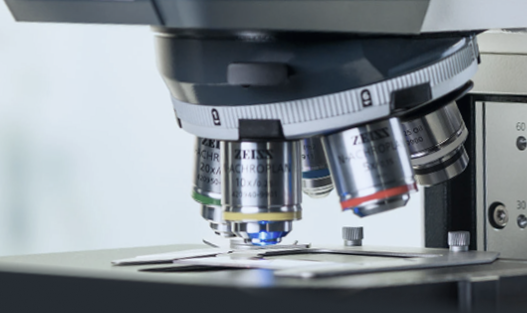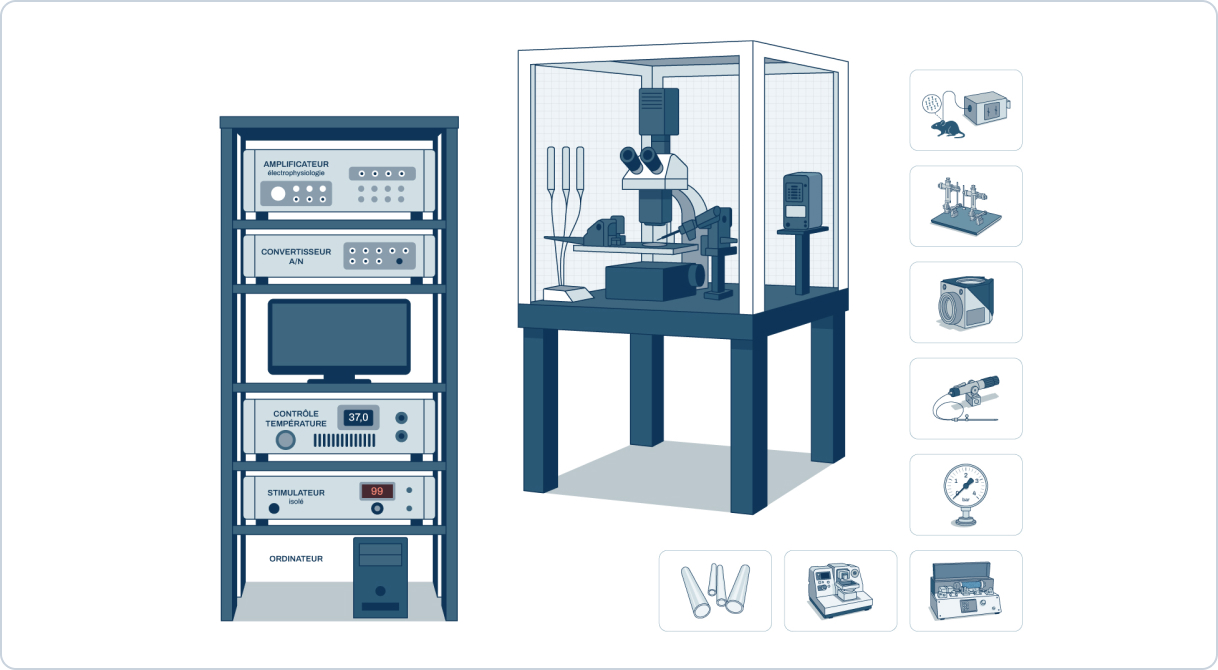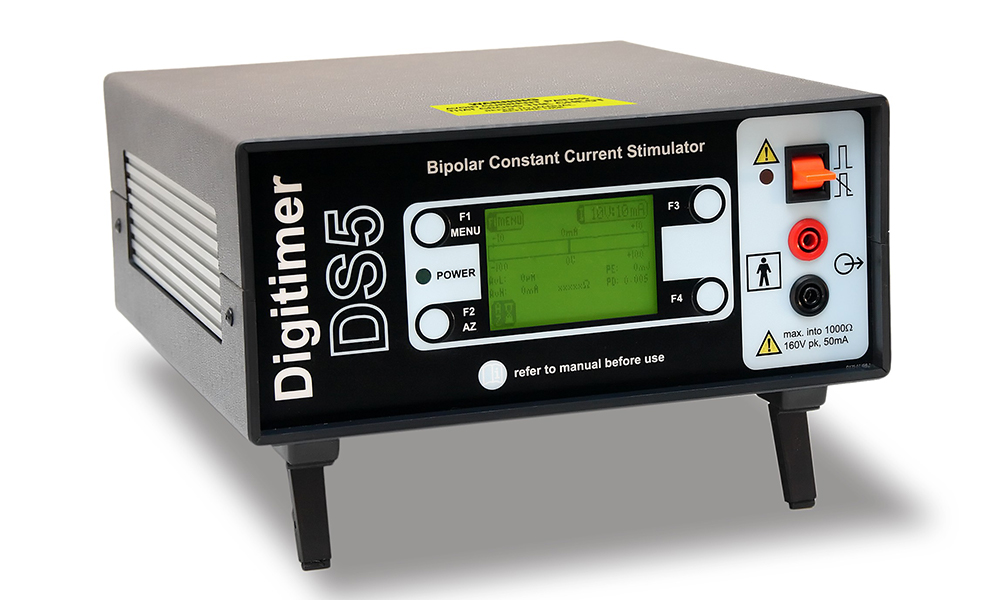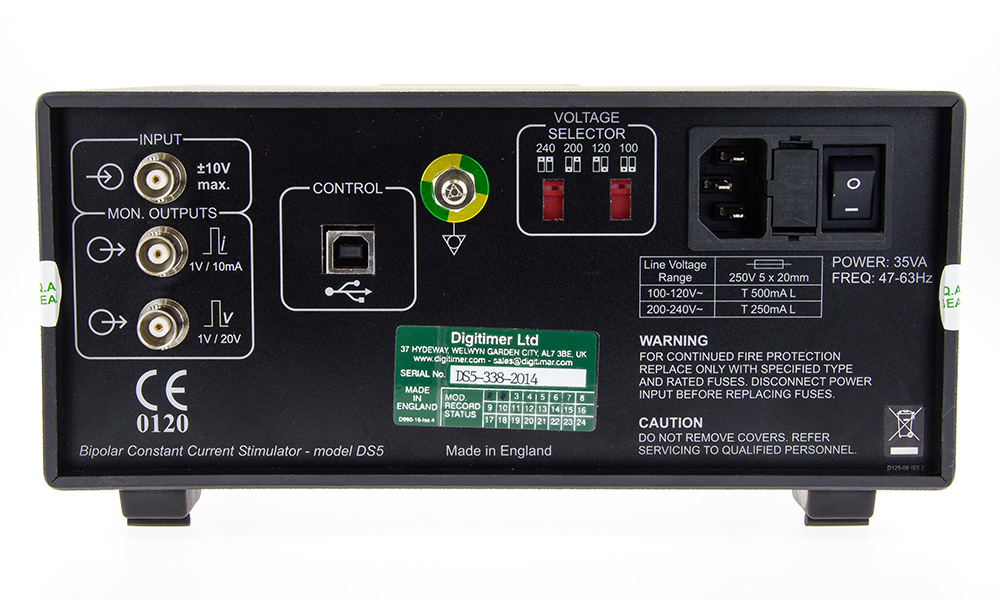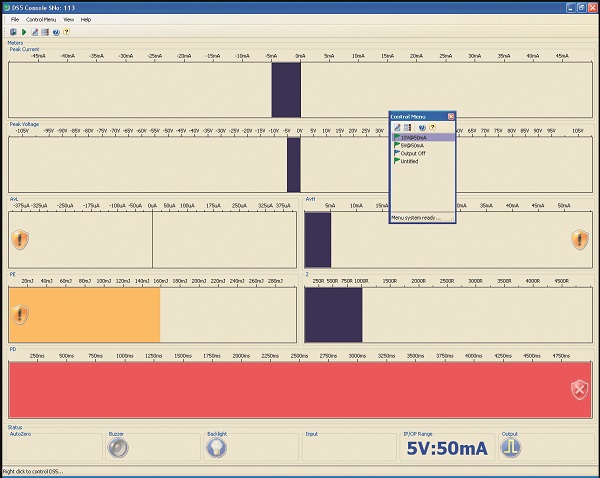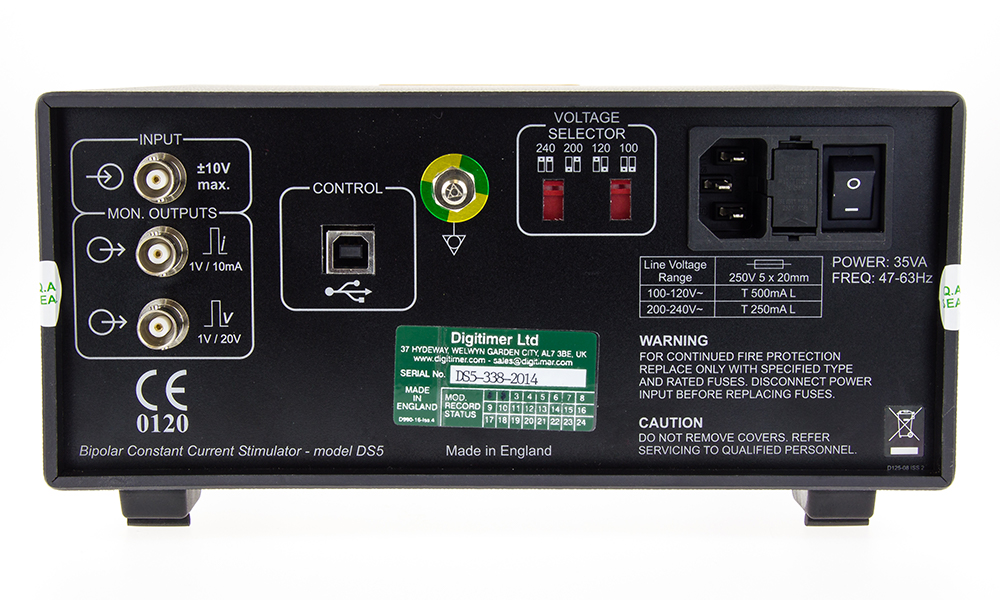DS5 Stimulator
The DS5 is an isolated constant current stimulator, controlled by an analogue signal (DAC or other), offering a bipolar output of up to ±50 mA at a compliance of ±120 V. It can generate arbitrary synchronised waveforms (sine, ramp, pulse, etc.) via an external control, while guaranteeing complete isolation between the subject and the control system to ensure the safety of research in human neurophysiology. It complies with the EN/IEC 60601 standard and has several built-in safety features.
DS5 Stimulator features
- Bipolar isolated constant current output, proportional to analogue input voltage (DAC)
- Three output ranges: ±10 mA, ±25 mA, ±50 mA, selectable via front panel or software
- Four analogue input ranges: ±1 V, ±2.5 V, ±5 V or ±10 V, for maximum compatibility
- Software-controlled generation of arbitrary waveforms (sine, ramp, square, etc.) via DAQ
- Real-time monitoring and safety limits: pulse energy, base current and duration
- Medical compliance requirements: CE marked device, EN/IEC 60601 standard
Technical characteristics of the DS5 Stimulator
| Caractéristique | Valeur |
|---|---|
| Output | Constant bipolar current proportional to input voltage |
| Current ranges | ±10 mA, ±25 mA, ±50 mA |
| Analogue input ranges | ±1 V, ±2.5 V, ±5 V, ±10 V |
| Voltage compliance | Up to ±120 V |
| Internal monitoring | Pulse energy, faults, quiescent current, duration |
| Protection | Limits can be configured and partially deactivated |
| Connections | BNC voltage input, BNC current and voltage monitor, USB firmware |
| Ordering | Windows software (DS5 Control Panel) or external analogue controls |
| Front indicators | Power LED, warning LED, LCD screen |
| Control interface | Tetracontrol via analogue control |
| Medical standard | IEC 60601, CE marked device |
| Dimensions | ~225 × 100 × 255 mm |
| Weight | Approx. 4 kg |
Applications
- Peripheral nerve excitability studies with QtracW software
- Galvanic vestibular stimulation (GVS) research via DS5 pairs
- Arbitrary protocols requiring complex synchronised waveforms
- Neuromodulation applications and psychophysiological studies requiring precise stimulus control
Documentation
Brochure
PDF file – 140.2 ko
